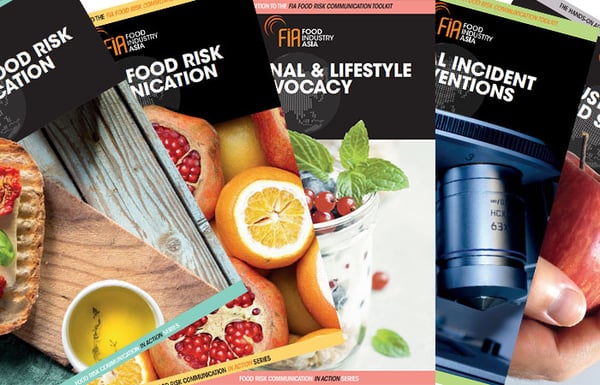The emergence of COVID-19 has demonstrated a great deal about the diversity in risk tolerance we display as humans. We have witnessed the full range of reactions to risk from outright fear to apathy, denial and despair.
We face risks as soon as we get out of bed. But it is what is in our deeped seated values and preferences that allow us (or perhaps not) to deal with the multitude of daily risks thrown at us.
Why is that? Our risk assessments are shaped by individual, social, cultural and scientific contexts so effective risk communication has to reconcile a wide range of influences.
The reality is, biases, risk perception and deviation from rational economic models (maximisation of individual utility) make us human. Communication about food risk must reconcile self-control, motivation and interests in addition to beliefs and worldviews. Attitudes are shaped by exposure to information sources, some of which are credible, other less so but perhaps equally persuasive. Existing predispositions may colour our interpretation of evidence, as will media coverage of poignant issues. Therefore, risk communication is a challenge, particularly in the food arena.
So how do we make better use of tools and resources from risk communication to help consumers accept, for example, novel food technologies and processes that have the potential to enable sustainable, healthy food choices? Or in a post-COVID-19 world, how do we radically change behaviour in food preparation and handling to reduce foodborne disease?
Well, we need to look and how actions beyond just information can shape desired behaviours and the limitations of purely factual discourse, which are the central aims of the FIA Risk Communication In Action Series.
What is it?
It pulls all essential elements of the theory of food risk communication into one. This is critical because there are critical learnings from the theory, both old and new, that help align practice and inform practical application.
Reciprocom and FIA developed five field guides to help provide practical advice that extends beyond the default of “food safety” risk communication. The field guide series represents a deeper dive and support with guidance to make the risk communication more applicable in real-world settings. In addition to food safety risk communication there are pressing areas of equal importance that need support with new risk communication strategies, from alternative proteins, critical incidents to obesity prevention.

What are the five field guides:
- Traditional Food Risk Communication
- Modern Food Risk Communication
- Nutritional & Lifestyle Advocacy
- Critical Incident Interventions
- Trust in the Food Sector
Each guide frames the scope of risk associated with the problem, and outlines the basis for solutions with evidence and principles cited. On the design of campaigns, all guides stress the importance of the audience, message development, information sources and communication processes. We have also included check-lists and coaching questions for particularly difficult situations and how to respond using salient advice.
The five Field Guides represent the broad scope of what constitutes perceived and objective risk in the food sector and the need to consider different food risk contexts (chronic vs acute, natural vs artificial for example) as separate entities, requiring nuanced strategic approaches.
Why have we done it this way? The one-size-fits-all approach does not work anymore. For example, the debate about natural and artificial risks; incremental and instrumental advancements made in the food chain; or food adulteration and blatant food fraud cannot and should not be treated the same. Similarly, risk mitigation and crisis need very distinct methods and treatments, which is what the field guides spell out and demonstrate.
To be sure, there is a clear need to moderate negative opinions around many, if not most, modern or new food technologies. Many consumers’ apparent willingness to avoid technologies could delay the prospects for potentially safer, more sustainable foods.
Difficulties in dealing with severe crises, what we term Critical Incidents, are an on-going threat to public confidence in food safety and cannot be handled with public relations crisis tools. Serious outbreaks of Salmonella require the highest levels of coordination and collaboration amongst institutes and industry by anticipating and practising simulation exercises in advance and making the sharing of data during crises far easier to assist in the rapid identification of sources.
The Field Guides have been designed to be as practical as possible without being formulaic. Case studies look at successes and failures so that you can learn from exemplary projects or from those that fell short.
And our approach is not all theory. We are now putting it into action through a collaboration with the Asia-Pacific Economic Cooperation (APEC) and FIA, the project of Trade Facilitation through the Development of an APEC Food Safety Risk Communication Framework, which is expected to be completed by 2021. We will apply the principles and evidence-based findings detailed in the Toolkit and Field Guides with APEC economies over the next 18 months in order to develop frameworks for food risk communication both scoped to day-to-day risk mitigation and emergency risk communication during food incidents.
